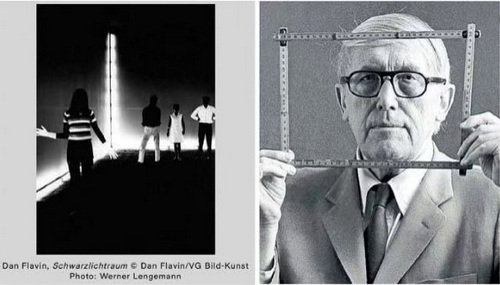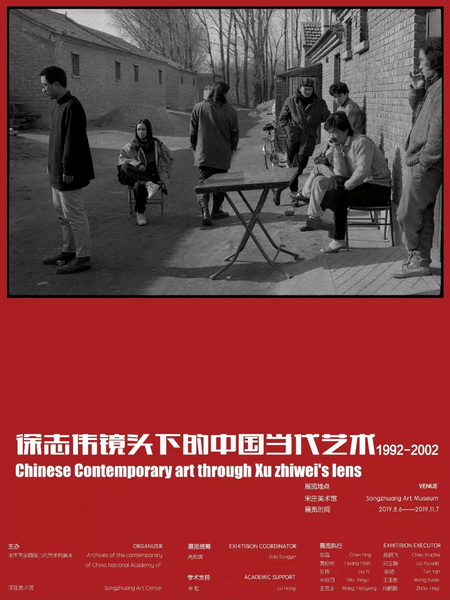
Introducing the Documenta in Kassel
蔡青译文 Cai Qing translation
Documenta 4 – Retrospective
4. documenta was the fourth edition of documenta, a quinquennial contemporary art exhibition. The artistic director was 24-strong documenta council and Arnold Bode.
Dates: 27 Jun 1968 – 6 Oct 1968
Location: Fridericianum, New Gallery, Karlsaue, Orangerie.
Artists 150,Visitors 207.000,Budget 2,817,000 DM
The fourth documenta, and the last for which Arnold Bode was chiefly responsible, was presented under the somewhat overly youthful-sounding slogan “The Youngest documenta Ever.” A considerably younger documenta advisory board was expected to bring the “International Exhibition” in Kassel into closer harmony with the spirit of the times in 1968. Absent for the first time was Werner Haftmann, one of the forefathers of documenta. Will Grohmann left the board along with him, followed later by Werner Schmalenbach and Fritz Winters. Following the retrospective focus of the 1955 documenta and the attempt to pick up the thread of international developments in art four years later, the time had come for a fundamental reassessment of position after the third exhibition, at the latest. In the aftermath of several internal disputes, a twenty-six member team was chosen to render decisions on the selection of artists in keeping with ground-roots democratic principles—not from a safe historical distance that went hand in hand with a latently authoritarian art-historical assessment, as had always been the case before, but with a consistent focus on the contemporary, i.e., the four years that had passed since the last documenta. Many of the works presented were completed shortly before the exhibition or actually produced specifically for documenta—a trend that would continue. Now, in 1968, Pop art made its grand, though somewhat delayed, entrance in Kassel, along with Color Field painting, Post-Painterly Abstraction, Op Art, and Minimal Art. In an imposing presentation that extended over two stories in the staircase of the rotunda, James Rosenquist’s Fire Slide (1967) established its place in the visual memory of documenta 4. The slogan “size matters” was affirmed even in the titles of Roy Lichtenstein’s Big Modern Painting (1967), Tom Wesselmann’s Great American Nude No. 98 (1968), Robert Indiana’s The Great Love (1966) in the Main Hall of the Fridericianum, and Claes Oldenburg’s Giant Poolballs (1967) in the Galerie an der Schönen Aussicht. Robert Morris’s L-Shapes (1967), Sol LeWitt’s expansive 47 Three-Part Variations on Three Different Kinds of Cubes (1968), and the paintings by Barnett Newman (Who’s Afraid of Red, Yellow and Blue II, 1967) and Morris Lewis also impressed visitors
with imposing formats. All in all, roughly one third of the entire exhibition was devoted to art from the U.S., as represented by fifty-one artists, a fact that earned documenta 4 the nickname “Americana.” In 1968, the year of student protests and anti–Vietnam War demonstrations, this triggered massive counterreactions—although the demonstrations in Kassel were relatively harmless compared with those that accompanied the Biennale in Venice that same year. Students waving red flags disrupted the opening addresses at Friedrichsplatz, and the morning press conference was effectively transformed into a Happening by a group of artists led by Wolf Vostell and Jörg Immendorf. Among other things, the activists protested the total absence of such contemporary currents as Fluxus, Happenings, and performance art at the official exhibition. And indeed, the omissions of documenta 4 with regard to the German art scene were glaring compared with the gaps in the presentation of U.S. art. While the conceptual art of a John Baldessari or a Joseph Kosuth was overlooked, as was performance art (Vito Acconci, Dan Graham), the most important exponents and movements in the fields of painting, sculpture, and environmental art were represented by Ed Kienholz, Robert Rauschenberg, and George Segal. Although Joseph Beuys did present a spatial installation, the group of German artists selected for presentation, including Horst Antes, Joseph Albers, and Erwin Heerich, for example, was not particularly innovative. Important artists of the 1960s, including Sigmar Polke, Gerhard Richter, Imi Knoebel, and Blinky Palermo, were absent, not to mention Fluxus and Happenings. A number of names were missing from the list of women artists, among them Louise Bourgeois, Eva Hesse, and Rebecca Horn. Four of the 149 artists presented were women: Jo Baer, Louise Nevelson, Marisol, and Bridget Riley.
Outdoors, documenta ventured for the first time onto the Karlswiese, which was used extensively—primarily for the presentation of more traditional, semiabstract sculptures. It was evidently still too early for Land art in 1968. One particularly memorable work featured there was Christo’s (Jeanne-Claude was not yet mentioned as coauthor at the time) spectacular 5600 Cubicmeter Package (1968), which introduced at least the rudiments of a new concept of sculpture. Following multiple failed attempts, the air-filled tube finally proved capable of standing upright and rose like a phallus to a respectable height of fifty-eight meters (thereby earning various fitting nicknames from the people of Kassel).
One novel work with a claim to social relevance was Bazon Brock’s Besucherschule (Visitors School), in which he aimed to make the changing references to reality in contemporary art comprehensible to a broad public. With his didactic, performancebased venture into art education, he exerted a lasting influence on the educational activities involved in subsequent documenta exhibitions.

Christo, 5450 m cubic package (1967/68) Photo: Stadt- und Kreisbildstelle Kassel / Christo,5450 m 立方包装 (1967/68)
介绍卡塞尔文献展
文献展4
艺术总监是由 24 人组成的文献展委员会和 Arnold Bode。
日期:1968年6月27日-1968年10月6日
地点:弗里德里希阿姆博物馆、新画廊、 卡尔索、橘园
艺术家150、访客207.000、 预算2,817,000 马克.
第四届文献展,也是阿诺德·博德主要负责的最后一个文献展,以听起来有些过于年轻化的口号“史上最年轻的文献展”来呈现。一个相当年轻的文献展顾问委员会预计将在卡塞尔举办“国际展览”与 1968 年的时代精神更加和谐。文献展的创始人之一维尔纳·哈夫特曼 (Werner Haftmann) 第一次缺席。 Will Grohmann 和他一起离开了董事会,随后是 Werner Schmalenbach 和 Fritz Winters。 继 1955 年文献展的回顾焦点以及四年后试图了解国际艺术发展的线索之后,最迟在第三次展览之后对立场进行根本性重新评估的时候到了。在几次内部纠纷之后,一个由 26 名成员组成的团队被选中根据根本的民主原则来决定艺术家的选择——而不是从与潜在的专制艺术并驾齐驱的安全历史距离出发—— 历史评估,一如既往,但始终关注当代,即自上次文献展以来已经过去的四年。 许多展出的作品是在展览前不久完成的,或者是专门为文献展制作的——这种趋势将继续下去。现在,在 1968 年,尽管有些延迟,波普艺术与色域绘画、后抽象绘画、欧普艺术和极简艺术一起进入了卡塞尔 。 詹姆斯·罗森奎斯特 (James Rosenquist) 的《火滑梯》(1967 年)在圆形大厅楼梯的两层楼上进行了壮观的展示,在第 4 届文献展的视觉记忆中确立了自己的位置。即使在罗伊·利希滕斯坦 (Roy Lichtenstein) 的《大尺寸》(Big 现代绘画(1967 年)、汤姆·韦塞尔曼的《伟大的美国裸体第 98 号》(1968 年)、罗伯特·印第安纳的《伟大的爱》(1966 年)在弗里德里西亚努姆的主厅,以及克拉斯·奥尔登堡的《巨型台球》(1967 年)在奥地利勋爵画廊。 罗伯特·莫里斯的 L 形(1967 年)、索尔·勒维特(Sol LeWitt)的《三种不同类型立方体的 47 个三部分变化》(1968 年),以及巴尼特·纽曼(Barnett Newman)(谁害怕红黄蓝 II,1967 年)和莫里斯·刘易斯的画作与气势磅礴的风格给游客留下深刻印象。
总而言之,整个展览大约有三分之一是来自美国的艺术,由 51 位艺术家代表,这一事实为第 4 届文献展赢得了“美国”的绰号。 1968 年是学生抗议和反越战示威的一年,这引发了大规模的反击——尽管与同年威尼斯双年展的示威相比,卡塞尔的示威相对无害。 学生们挥舞着红旗打乱了弗里德里希广场的开幕词,上午的新闻发布会被 Wolf Vostell 和 Jörg Immendorf 领导的一群艺术家有效地转变为 Happening。 除其他外,活动人士抗议官方展览中完全没有激浪派、事件和行为艺术等当代潮流。 事实上,与美国艺术展示的差距相比,第四届文献展对德国艺术界的遗漏是显而易见的。 虽然约翰·巴尔德萨里 (John Baldessari) 或约瑟夫·科苏斯 (Joseph Kosuth) 的概念艺术和行为艺术 (Vito Acconci, Dan Graham) 被忽视,但绘画、雕塑和环境艺术领域最重要的代表和运动由 Ed Kienholz 代表, 罗伯特·劳森伯格和乔治·西格尔。 尽管约瑟夫博伊斯确实展示了一个空间装置,但被选中展示的德国艺术家群体,例如霍斯特·安特斯、约瑟夫·阿尔伯斯和欧文·希里希,并没有特别创新。 1960 年代的重要艺术家,包括 Sigmar Polke、Gerhard Richter、Imi Knoebel 和 Blinky Palermo 均缺席,更不用说 Fluxus 和 Happenings。 女性艺术家名单中缺少一些名字,其中包括路易丝·布尔乔亚、伊娃·黑塞和丽贝卡·霍恩。 展出的 149 位艺术家中有四位是女性:Jo Baer、Louise Nevelson、Marisol 和 Bridget Riley。
在户外,文献展首次涉足 Karlswiese,它被广泛使用——主要用于展示更传统的、半抽象的雕塑。 1968 年的大地艺术显然还为时过早。其中一件特别令人难忘的作品是 Christo 的(当时尚未提及 Jeanne-Claude 作为合著者)壮观的 5600 Cubicmeter Package(1968 年),它至少介绍了雕塑的新概念。 经过多次失败的尝试,充气管终于被证明能够直立并像阴茎一样上升到五十八米的可观高度(从而获得了卡塞尔人民的各种合适的绰号)。
Bazon Brock 的 Besucherschule(访客学校)是一部声称具有社会相关性的小说作品,他的目标是让广大公众能够理解当代艺术中对现实不断变化的引用。 凭借他对艺术教育的教学、基于表演的冒险,他对随后的文献展所涉及的教育活动产生了持久的影响。

Note注:
For the first time, the documentary exhibits as a group curating, committee-style, democratic curatorial approach. Echoing the youth movement in the 1960s, the document exhibition also experienced disputes, and finally determined the direction of contemporary art.
文献展第一次出现群体的,委员会式的民主性的策展方式。呼应了60年代的青年运动,同时文献展也经历了纷争,最终坚定了当代艺术的展示方向。
【声明】以上内容只代表原作者个人观点,不代表artda.cn艺术档案网的立场和价值判断。

